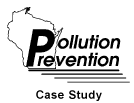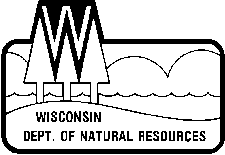
Industrial Towel & Uniform
Replaced disposable sorbents with reusable sorbent material which diverts hazardous waste from landfills
Feedstock
Disposable absorbents containing clay, sawdust, or cellulose.
Waste
Solid waste: disposable absorbents saturated with liquid rust inhibitors, cutting oils,
stamping lubricants and coolants.
Disposal
Saturated disposable products were landfilled or drummed for incineration. Fluids were
discharged to a Publicly-Owned Treatment Facility (POTW).
Pollution Prevention Process
Feedstock
The liquids and industrial applications remain the same.
A specially designed reusable absorbent (SorbItsŪ) is used to control and contain the fluids.
Waste
None. The soiled products are laundered by ITU to remove waste fluids. The laundered
(SorbItsŪ) are returned to the client for reuse. Wastewater is treated and recycled.
Disposal
ITU's AbsorbTech service eliminates 250 tons of non-hazardous landfillable waste
previously generated by disposal absorbents. SorbItsŪ eliminates the solid waste of the
absorbent itself (approximately 50,000 cubic yards of wastepaper per year) and ITU's water
pretreatment process captures the fluids for recycling or thermal destruction as a high
BTU value secondary fuel.
ITU has installed approximately 1.5 million dollars of equipment at its New Berlin and Neenah facilities. The AbsorbTech service requires no capital investment for clients.
Operational/Maintenance Costs
The AbsorbTech service functions with minimal inventory and requires less labor to achieve
a cleaner facility. The cost of collection and proper disposal (for equal amounts of
fluid) is lower using the AbsorbTech system than with the previous system. Operation of
the water pretreatment equipment requires continuous monitoring by a licensed operator. A
portion of this cost is recovered by the ability to reuse treated water.
Payback Period
When compared to thermal destruction of disposable absorbents, the AbsorbTech service can
save roughly 40% of waste disposal fees. A payback period for the SorbItsŪ product is
calculated to be less than one year of normal use. The payback period for the pretreatment
equipment is dependent upon the success of the SorbItsŪ service. An increased volume of
SorbItsŪ business will provide a faster return.
945 Apple Blossom Drive
Neenah, Wisconsin 54956-4511
414/729-6100
University of Wisconsin Extension
Solid and Hazardous Waste Education Center
Milwaukee area: 414/475-2845
Remainder of state: 608/262-0385
Pollution Prevention
Information Clearinghouse
Wisconsin Department of Natural Resources
Hazardous Waste Minimization Program
608/264-8852, 608/267-9523 or 608/267-3763
 |
PUBL-TS-024 94 |